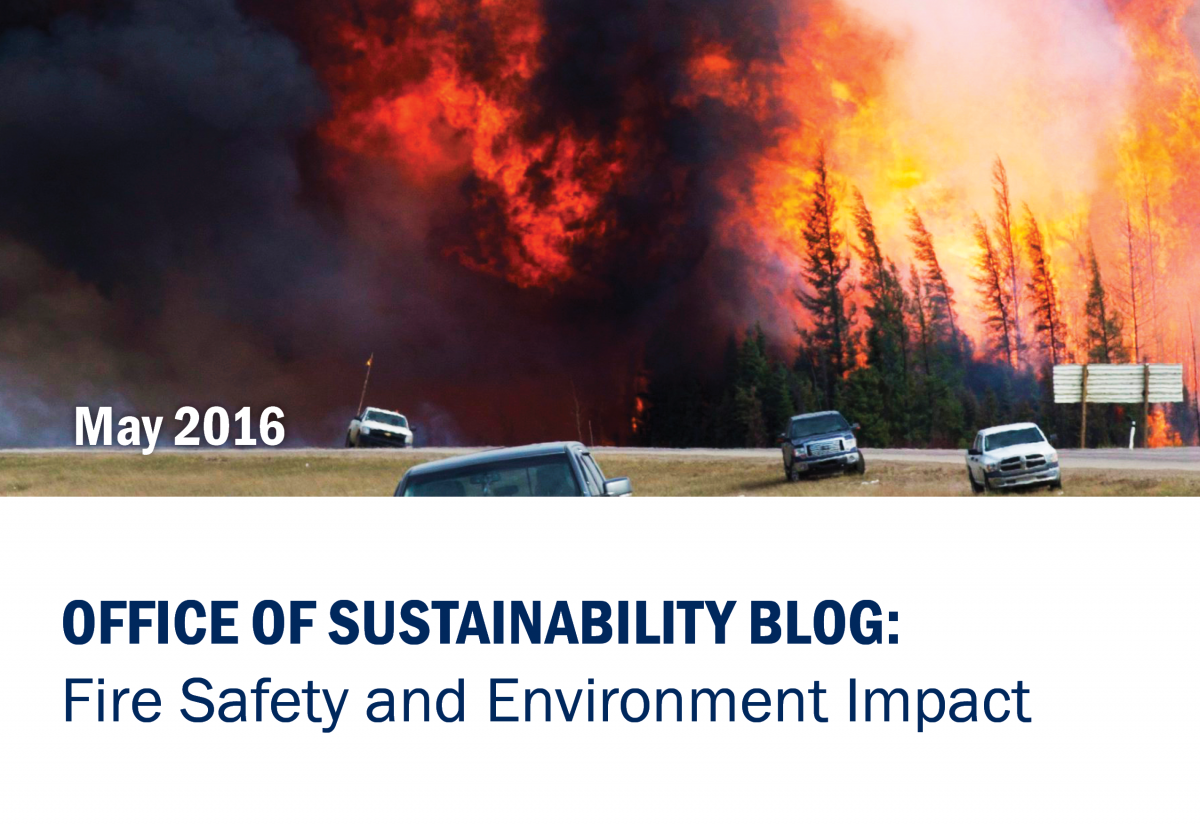
Impact of Forest Fires & Fire Safety
Our hearts go out to everyone that has been affected by the terrible wildfires that continue to burn in Fort McMurray. With this on our minds, we thought we would tell you a little more about forest fires – why they happen, how they can be good and bad for the environment and provide you with some tips for any upcoming summer campfires.
There are two sides to forest fires. Prescribed, also known as controlled burns, are beneficial because they are planned, they create more vegetation lands and they help refresh the ecosystem. Controlled burns are purposely ignited to prevent wildfires from occurring. Wildfires on the other hand are unplanned and can get out of control as we have seen in Fort McMurray. They impact the environment by destroying surrounding communities and ecosystems. Here are some pros and cons of forest fires from Vision Launch and Health Research Funding.
THREE PROS OF CONTROLLED BURNS
- Controlled burns stop the spread of diseases.
It is commonly known that forests have a ton of insects and pests that carry diseases (Health Research Funding). Trees and plants can catch these diseases, so controlled burns decrease the chance that an infestation will spread in the forest. Discover what and how insects damage trees in Canada from Natural Resources Canada.
- Controlled burns enhance plant growth.
Controlled burns allow smaller plants access to water and sunshine. When older plants decompose, they help produce a new generation to grow because the vegetative process increases nutrients in the soil.
- Controlled burns create new habitats for wildlife.
A clear open space can help animals create their habitats and access more natural resources such as water and food.
THREE CONS OF WILDFIRES
- Wildfires cause air pollution.
Plants and trees store carbon and emit oxygen into the air. However, when wildfires occur, trees and plants release carbon back into the atmosphere as carbon dioxide and carbon monoxide which are greenhouse gases (GHG). Increased GHG in the atmosphere is detrimental to human and animal health and contributes to Climate Change. Find out what else is released from burning vegetation here.
- Wildfires can impact communities.
Wildfires destroy everything in their path making animals and people leave their homes (Vision Launch). According to the Insurance Bureau of Canada, most home insurance policies cover damages caused by fire, but it can take years for a community to rebuild its infrastructure.
The fires in Fort McMurray are still being evaluated, so the amount of time it will take to rebuild the town is still unknown. However, the Bank of Montreal estimates that the wildfires could cost insurers $9 billion to rebuild the town (CBC). In support of the disaster in Fort McMurray, Trudeau announced that for every donation to the Red Cross, the federal government will match it to support relief efforts (CBC).
As for the wildlife community in Fort McMurray, the impact on animals is yet to be surveyed. According to a Global News article, the intensity of the fires most likely destroyed habitats.
- Wildfires can be deadly.
Wildfires can kill a whole ecosystem, an entire neighbourhood and sadly sometimes people like firefighters who are working hard to stop it from spreading.
As we know, wildfire season occurs in the dryer months of the year during camping season. Camping is a wonderful activity to connect us with nature, but we need to be mindful of our actions since the dry, relatively warm weather increases the chance of accidental forest fires.
Lyle Quan, Program Manager of Humber’s Fire and Emergency Services Program, has some tips to prevent an accidental fire from igniting at your campsite.
THREE FIRE SAFETY TIPS FOR YOUR CAMPSITE
- Cleanliness is key!
Put away any combustible material, whether it’s garbage, paper or dry brush. Keep the area around the campfire tidy.
“You want to make sure those little hot embers don’t have the opportunity to land on something right beside the campfire,” says Quan.
- Tools are needed!
Quan strongly recommends everyone to purchase a small fire extinguisher and include it with your camping equipment. If you don’t have one, make sure you have a bucket of water nearby to quickly put out an accidental fire. A fire-safe blanket can be used, but if not used properly it can increase the spread of fire. So make sure you know how to use it.
“If you do get something on your clothes, remember the old term: ‘stop, drop and roll’ because the dirt on the ground will help put everything out,” says Quan.
- Check weather conditions and any fire bans!
Quan says fire chiefs place fire bans during extremely dry weather conditions because there is a greater chance that it will spread.
Wildfires generally spread at times of low humidity and high winds. They are common during the start of spring because of all the dry leaves and wood on the ground are highly flammable. Make sure to keep up-to-date with fire bans in your region when going camping.
For eco-friendly camping tips, check out a previous blog post here!

